Europa Clipper Mission: NASA’s Journey to Jupiter’s Moon
Have you ever wondered about life beyond the Earth? Astrobiologists are working on Europa, Jupiter's moon to get this answer. Scientific evidence suggests that Europa may have the elements necessary for life. The Europa Clipper mission is the first mission that was sent for an exhaustive search of Europa. You will be surprised to know that it will make 49 close flybys of Europa while orbiting Jupiter. The mission's name symbolizes the lightweight, swift clipper ships of the 19th century that often sailed trade routes. Thus, the name is referenced in the mission update, which shows a sailing ship.
You may know about ESA's Jupiter Icy Moons Explorer, which was launched in 2023. Europa Clipper is an addition to the above plan. It will try to pass Callisto many times and Europa twice before entering orbit around Ganymede. In 2015, NASA officially approved the mission after the exertion of Planetary Society. The spacecraft of NASA’s Europa mission will travel by Europa at a quick pace.
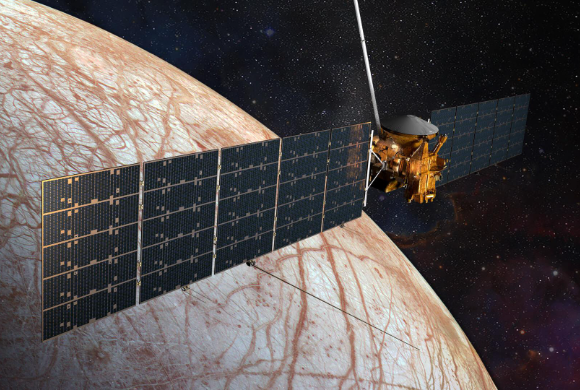
Why send a spaceship to Europa?
The moon Europa of Jupiter has a huge ocean under a thick layer of ice that may support life. Everything required for a healthy ecosystem, including energy, liquid water, and many other fundamental chemical components of our life may be found in its salty ocean. NASA has launched the Europa Clipper mission to conduct a series of close flybys and a detailed investigation of Europa. It will be the first expedition specifically designed to investigate a planet other than Earth that has a worldwide ocean.
Evidence of Life Beyond Earth in Europa
NASA Europa mission may assist scientists in identifying the occurrence of life beyond the Solar System. This investigation builds on evidence suggesting life on other planets with subterranean seas. Astrobiologists are investigating Europa's capacity to support living organisms. Europa provides strong proof of a liquid water ocean under its frozen surface. It is regarded as one of the most potential locations outside of Earth where we could discover livable conditions right now. Europa Clipper mission will ascertain whether there are any potentially habitable areas under Europa's surface.
Water in Jupiter’s Europa
The mission of NASA Europa will investigate the water properties on Europa. It is believed that the volume of water in Europa's salty ocean is more than double that of Earth. However, the moon's ice crust, which may range in width from 3 km (about 2 miles) to more than 30 kilometers (19 miles), might trap all of that water.
There might be vents on Europa's ocean floor that discharge heat from the core, but no sunlight could penetrate that shell to support life. Life abounds in comparable vents at the ocean floor. There are even experts who believe that life on Earth may have started in these vents.
One of the main goals of scientists at Europa Clipper mission has long been an expedition to Europa. It's possible that the water on Europa receives nourishment from both above and below. On the ocean floor, Europa's rocky innards may gradually churn and reveal fresh material to any living things there. Whereas on the other side of the ocean, the moon's ice shell may carry molecules from Europa's surface down into its ocean. Additionally, Europa may send water vapor plumes into space. It could even have lakes that might support life inside its frozen covering.
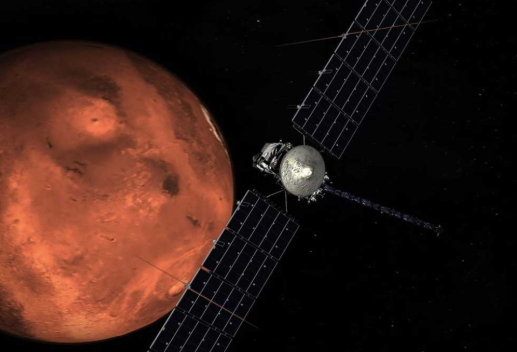
What Will Europa Clipper Do?
Europa Clipper will assess whether the frozen moon Europa of Jupiter is now habitable. The evidence obtained by the Galileo spacecraft that traveled to Jupiter from 1995 to 2003. It indicated a subsurface ocean under Europa's ice crust. The possibility of water presence puts strong evidence of life. Projects like Jupiter Icy Moons Orbiter and Europa Orbiter were ideas for sending a spacecraft to Europa. However, it was determined that it would be safer to place a spacecraft in an elliptical orbit around Jupiter and do 49 near flybys of the moon.
Objectives of Europa Clipper
One of the mission’s primary aims is the detection of potential signs of life on Europa. The researchers considered the impact of radiation from Jupiter's magnetosphere in Europa's orbit. The Europa Clipper spacecraft will perform a number of studies, including analyzing the induced magnetic field surrounding Europa and trying to find water ejecta plumes from a subsurface ocean. Europa Clipper mission aims to study Europa, assess its habitability, and assist in choosing a landing location for the anticipated Europa Lander. The goal of this investigation is to comprehend the three primary necessities of life: energy, chemistry, and liquid water.
The specific aims of the mission are to Europa Clipper life detection. It will search on:
- Ocean and ice shell: Verify the presence of water beneath or inside the ice, describe its characteristics, and research surface-ice-ocean exchange mechanisms.
- Composition: Key components' distribution, chemistry, and connections to the makeup of the ocean.
- Geology: The properties and development of surface attributes, such as locations of recent or ongoing activity.
How Europa Clipper Works
NASA's Europa Clipper spacecraft launched from Florida's Kennedy Space Center on October 14, 2024, aboard a SpaceX Falcon Heavy rocket. When it reaches the Jupiter system around 2030, it will circle Jupiter rather than Europa to utilize a shorter span in the planet's powerful radiation zone. Periodically, the spacecraft will fly over Europa to gather data, plunge into Jupiter's radiation, and then depart once more. Despite this orbit, the Europa Clipper equipment must be kept safe from harm in a radiation vault aboard the spaceship. However, with more than 40 flybys of Europa planned over 3.5 years, the approach will enable the spacecraft to examine its destination for years instead of days or months.
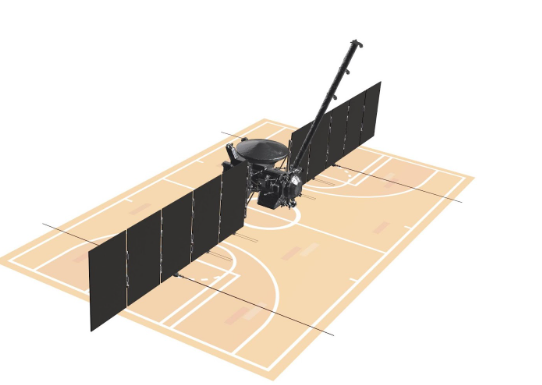
NASA's Biggest Spacecraft for Planetary Missions
Europa Clipper is the biggest spacecraft NASA has ever built for a planetary mission, complete with enormous solar panels and radar antennae. It will operate in the Jupiter structure, which is over five times as distant from the Sun as Earth. The spacecraft have huge solar arrays to gather enough light for their power demands. The robotic, solar-powered Europa Clipper spacecraft was designed to carry out the first in-depth studies of Jupiter's ice moon Europa.
It is more than 100 feet (30 meters) long when its solar panels are up, which is roughly the size of a basketball court. The spacecraft's propulsion module, radio frequency section, and avionics vault make up its main body.
- Europa Clipper has a height of around 16 feet (5 meters).
- It covers over 100 feet (30.5 meters) when its arrays become operational
- The spaceship weighs 7,145 pounds (3,241 kg) dry (no fuel in the tanks).
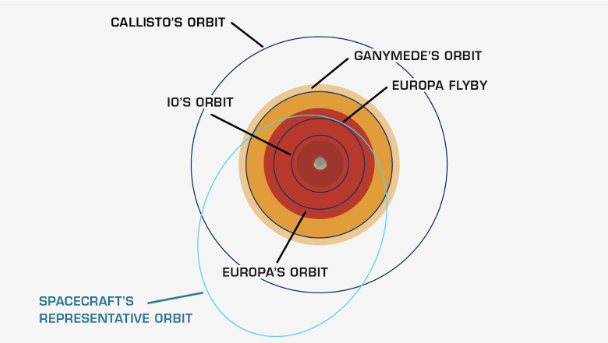
The moon Europa circles the gas giant Jupiter within a ring of intense radiation produced by the planet's powerful magnetic field, and NASA's Europa Clipper is going to study the moon. This graphic shows the orbits of Jupiter's three additional biggest moons, Io, Ganymede, and Callisto, as well as the relative strength of Jupiter's radiation bands.
Europa Clipper Instruments
Europa Clipper is equipped with scientific equipment that will be used to examine the moon's generated magnetic field and the possible existence of geothermal activity. It will identify an occurrence of a saline-rich subterranean ocean or oceans. Nine scientific instruments and gravity research that makes use of the telecommunications infrastructure are loaded into the spacecraft.
- NASA equipped Europa Clipper with a magnetometer and gravity indicators to gather information about Europa's ocean and deep interior.
- Europa Clipper will use an ice-penetrating radar to look for subsurface water.
- It will also employ cameras and spectrometers to create high-resolution photos and structure maps of the planet's surface and thin atmosphere.
- The spacecraft has brought a thermal instrument to identify areas of warmer ice and maybe recent water eruptions.
- It also has equipment to study the makeup of microscopic particles in the moon's thin atmosphere and ambient space environment.
Europa Clipper Built to Resist Jupiter’s extreme Radiation
Since Europa is surrounded by radiation in Jupiter's magnetic field, Europa Clipper's cargo and other equipment will be housed in a thick-walled chamber. NASA's Juno mission was the first to make use of this radiation vault-equipped approach to get to Jupiter. The titanium and aluminum vault or chamber walls will significantly slow down the deterioration of the spacecraft's electronics. These walls will serve as a radiation barrier against high-energy atomic particles
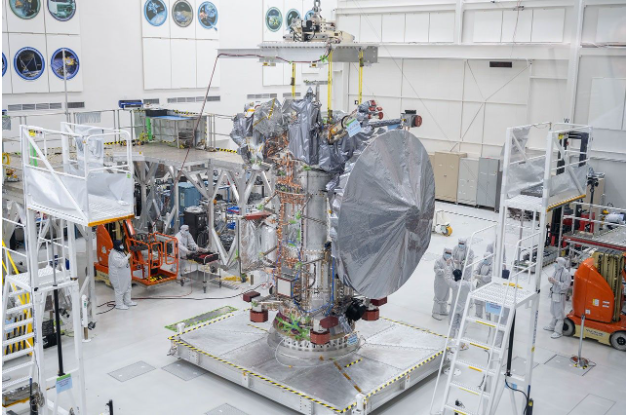
FAQs
What is the Mission of the Europa Clipper?
Europa Clipper mission is launched to investigate Jupiter's moon, Europa. It will analyze surface characteristics and ice crust, verify the existence of a subterranean ocean, and ascertain the chemical makeup of the water. The mission's ultimate goal is to increase our knowledge of whether frozen moons like Europa in our solar system may be habitable.
How Long Will the Europa Clipper Mission Take?
The Europa Clipper mission will last approximately 5.5 years.
What are the Four Main Things that Europa Clipper Will Investigate?
Europa Clipper will investigate the following:
- Water: Two times as much as the oceans on Earth.
- Organics: Vital chemical components derived from many sources.
- Energy: Chemical sources of energy from the sea floor and the surface.
- Stability: The state of conditions being unchanged for four billion years.
What is the Europa Clipper experiment?
Europa Clipper has a gravity experiment with nine instruments. It will circle Jupiter and pass past Europa 49 times, collecting information to assist scientists in better understanding the composition, geology, and interior of the moon, Europa.
How Long is a Day on Jupiter?
According to Jovian time, a day on Jupiter lasts 9.9 hours, and it takes the planet approximately 12 Earth years (4,333 Earth days) to complete one round around the Sun, which is equivalent to a year.
What is the Current Status of Europa Clipper?
The Europa Clipper was launched on October 14, 2024. On April 11, 2030, it is anticipated to reach the Jupiter system. To reach there, it will require two gravity aids. Mars will provide the first gravity assistance on March 1st, 2025, while Earth will provide the second on December 3rd, 2026.

Be the first to write a review!